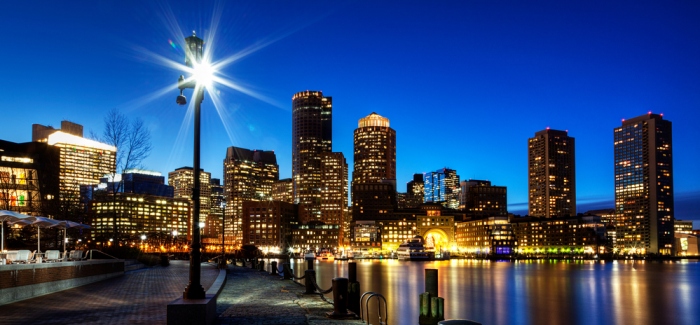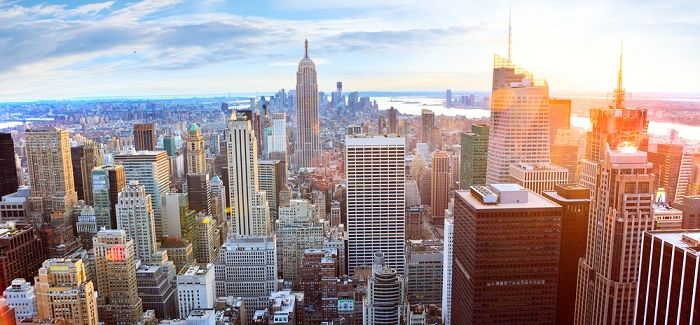Famed for its theme parks (including Disney World), sunny weather, miles of beaches, nightlife and arts scenes, Florida is a hugely popular holiday destination – and it’s also a great place to be a student. Read on to discover the top universities in Florida, and find out more about their locations.
Located on the far south-eastern peninsula of the US, Florida has over 1,200 miles of coastline, and a climate that ranges from subtropical to tropical with a strong chance of humidity, hurricanes and unabating heat.
Five universities in Florida feature in the QS World University Rankings® 2015/16, and these are widely spread across the state. Choosing exactly where to study in Florida will largely be down to which institution best matches your academic background and ambitions, but you may also want to consider which part of the state you’d most like to live in.
Top universities in Florida
Of the five top universities in Florida featured in the QS World University Rankings, four are public universities and one (the University of Miami) is private. All of these are comprehensive institutions, offering courses in a wide range of subject areas.
University of Florida
The highest ranked among universities in Florida is the University of Florida, which is currently ranked 180th in the world and 46th in the US. The school has an enrolment of just under 50,000 students, of which 16,000 are postgraduates. The University of Florida’s campus is situated inland in the city of Gainesville, which (despite its lack of beaches) offers a high quality of living, with relatively low living costs and a good share of the state’s famous sunshine.
University of Miami
The University of Miami, ranked 280th in the world and 61st in the US, trumps the landlocked University of Florida with its close proximity to Miami’s long stretches of sand and sea. A private university, it has a smaller student community of around 16,800. It teaches across a broad subject spectrum, including graduate schools of medicine and law.
Florida State University
At the opposite end of Florida in state capital Tallahassee is the flagship Florida State University. The university is currently ranked 401-410 in the world and 80th in the US, with 41,400 students enrolled. A large public research university, it has courses in pretty much every subject you can think of, at both undergraduate and postgraduate levels.
University of South Florida
Travelling a good 260 miles south along the west coast from Tallahassee, you’ll find the University of South Florida located in the city of Tampa. Ranked 501-550 in the world and joint 97th in the US, the university offers more than 230 degree programs to a student body of over 48,000. It has an annual budget of $1.6 billion and has been praised for its sustainability, being one of a small number of universities nationwide given a gold rating by the Association for the Advancement of Sustainability in Higher Education.
University of Central Florida
Ranked 701+ in the world and joint 134th in the US, the University of Central Florida is the second-largest university in the US in terms of enrolment, with a whopping 61,000 students enrolled from 148 different countries and all US states. It’s located in Orlando and offers 210 degree programs in its 13 colleges.
Keep reading to find out more about the cities in which each of these top universities in Florida is located – as well as some of the state’s other major attractions.
Florida’s top student cities
Miami
Tallahassee may be the state capital, but Miami, home of the University of Miami, is by far the most populous and best-known city in Florida. Located along the south-east coast of the peninsula, Miami has a distinct atmosphere. A population that is two-thirds Hispanic means that Spanish is often the language you’ll hear spoken in the city’s beach-front cafés and cosmopolitan bars. Renowned for high rates of crime and poverty in the 70s and 80s, Miami now enjoys an air of affluence and optimism, and is now known for the famous three-mile-long Ocean Drive, known for its Art Deco-style hotels.
Orlando
In Central Florida, the expanse between the east and west coasts, you’ll find the city of Orlando, home of Mickey Mouse et al. What used to be a farming town became a highly popular tourist destination in the 1970s. Nicknamed ‘The City Beautiful’, Orlando is home to the University of Central Florida, one of the largest US universities.
Although you’re unlikely to spend all your days off visiting theme parks, Orlando certainly offers lots of attractions to help relieve the stress of university exams, including Disney World, SeaWorld, Universal Studios, LEGOLAND, Islands of Adventure and Dinosaur World.
Fort Lauderdale
North of Miami on the west coast is the affluent city of Fort Lauderdale, known for its party atmosphere, and therefore a popular Spring Break destination for students. Having matured in the last few years, the city has become a much more sophisticated affair. While still appealing to student party animals with a large number of bars and nightclubs, Fort Lauderdale can also offer a great selection of places to eat, drink and shop, both along the coastline and inland towards Las Olas Boulevard.
St Augustine
Founded by the Spanish in 1565, St Augustine was the very first permanent European settlement in the US. Close to the student city of Gainesville, St Augustine is another of Florida’s popular coastal resorts. Aside from the popular beaches, the city is known for its Mediterranean history, and the Mediterranean feel of its cafés and cobbled streets. This is a city which – as you’re passed by locals in period dress on horse-drawn carriages – will make you feel lost in time. The historic cos-play may strike some as a little artificial, but unlike the theme parks a few hours south, these buildings and relics are as authentic as they come.
Tampa
Another Spring Breakers’ paradise, on the doorstep of the University of South Florida, Tampa Bay captures the tourism spillover from Orlando’s theme park resorts, as well as the Latino culture blown inland from the Gulf of Mexico to the Cuban enclave of Ybor City. Although a business district first and foremost, Tampa offers the famous St Petersburg Beaches, as well as a string of barrier-island beaches perfect for those students wanting an island lifestyle with a cosmopolitan feel.
Things to see and do in Florida…
The Florida Keys
The Florida Keys is a chain of islands 100 miles long, ending just 90 miles short of Cuba. Closest to those studying at the University of Miami, the Keys are a paradise for outdoorsy types tired of the city grind. You’ll find a myriad of beautiful places to snorkel and dive, including the Florida Reef, a huge area of living coral just a few miles offshore. The ultimate destination for many, however, is Key West, the end of the 100-mile stretch before a great expanse of ocean. Known as the ‘Conch Republic’, Key West is both lively and laid-back, with a Caribbean feel to its bars and streets. The only downside is that you might not want to go back to the artificial lights of the lecture hall…
The Everglades
The Everglades National Park forms a large part of southern Florida, taking over almost the entire tip of the peninsula. Again, the University of Miami is the most proximate, but a weekend visit to The Everglades should tempt students based at any of the universities in Florida.
Contrary to popular belief, The Everglades are not stagnant swamps, but actually slow-moving wet prairies destined for the ocean. The area offers a truly unique ecosystem with a subtropical climate, and is almost uninhabitable for humans, meaning a guided tour is often necessary. The waters are home to alligators (Florida’s official state reptile), along with bottlenose dolphins, manatees and crocodiles. Overhead, bald eagles, ospreys and snowy egrets can be spotted, above endless sprawls of sawgrass and mangrove bushes. Students come to The Everglades not only to enjoy the sights, but also to hike, bike, canoe, kayak, boat, camp and fish.
Facts about Florida
- Florida shares borders with Georgia and Alabama to the north, the Gulf of Mexico to the west and the Atlantic Ocean to the east.
- Hurricane season is June to November.
- It’s not just the tourist industry that dominates Florida. The citrus industry is also big business in the region, generating 76,000 jobs and more than US$9 billion for the economy every year.
- The capital of Florida is Tallahassee and the largest city by area is Jacksonville, but Miami has the largest metro population by far.
- The Disney World theme park in Orlando covers a massive 30,500 acres (123 sq km).
- Florida produces approximately 75% of the US citrus fruit market and 40% of the world’s orange juice supply. It is second only to Brazil in orange production.
- In a 2015 survey by Chief Executive.net, US CEOs voted Florida the second-best state for business, after Texas.
- Miami Beach’s Art Deco Historic District boasts the world’s largest collection of Art Deco architecture.
- Miami is the backdrop to many films, including Bad Boys, Iron Man 3, There’s Something About Mary, Miami Vice and Marilyn Monroe’s Some Like it Hot.
- Florida has more than 1,300 golf courses, the most of any US state.
- The state is home to over a million alligators. The word ‘alligator’ comes from the Spanish ‘el legarto’ meaning ‘the lizard’ and was the name given to the animal by Florida’s early Spanish settlers.
- The Everglades are the only place in the world where crocodiles and alligators live side by side.








